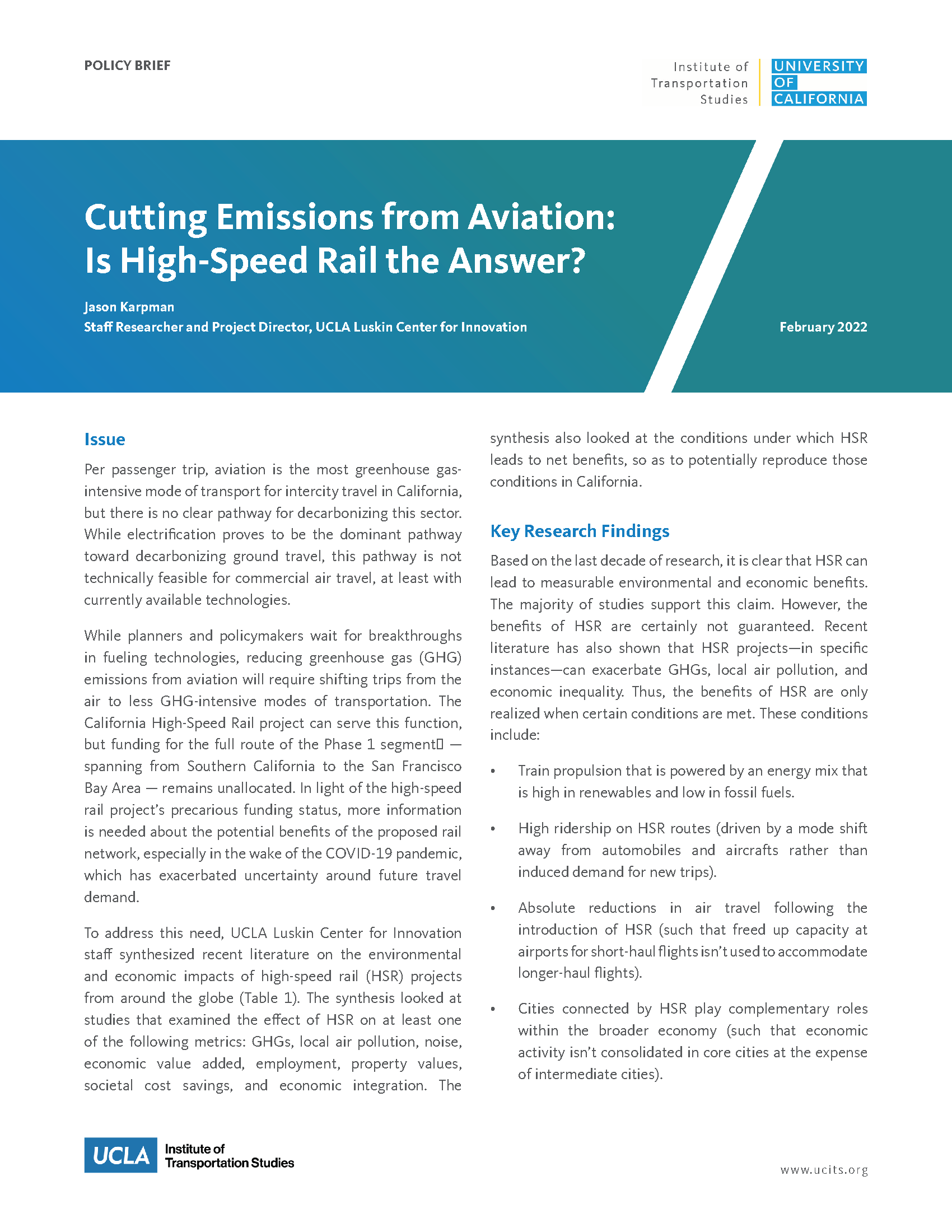Date: February 15, 2022
Author(s): Jason Karpman
Abstract
Per passenger trip, aviation is the most greenhouse gas-intensive mode of transport for intercity travel in California, but there is no clear pathway for decarbonizing this sector. While electrification proves to be the dominant pathway toward decarbonizing ground travel, this pathway is not technically feasible for commercial air travel, at least with currently available technologies. While planners and policymakers wait for breakthroughs in fueling technologies, reducing greenhouse gas (GHG) emissions from aviation will require shifting trips from the air to less GHG-intensive modes of transportation. The California High-Speed Rail project can serve this function, but funding for the full route of the Phase 1 segment — spanning from Southern California to the San Francisco Bay Area — remains unallocated.
About the Project
Aviation is a difficult sector to decarbonize. The high energy and power requirements of flight make electrification challenging and low-carbon liquid fuels face their own technical and practical hurdles. While much of the attention on air transportation pertains to passenger travel, the relatively smaller air cargo industry faces similar challenges to decarbonization as the passenger airline industry. In the face of a difficult to decarbonize aviation sector, carbon savings may be realized by facilitating modal shifts from air transportation to less-polluting ground transportation where feasible. California’s effort to build a high-speed rail network for interregional travel in California is an example of such a strategy and features prominently in the state’s Scoping Plan as one pathway towards meeting 2050 GHG emissions reduction targets in the transportation sector. Luskin Center for Innovation researchers propose conducting an exhaustive search of the relevant peer reviewed and grey literature on studies that examine the economic and environmental effects of policies, programs, and projects aimed at shifting passenger and cargo movements from the air to the ground.


